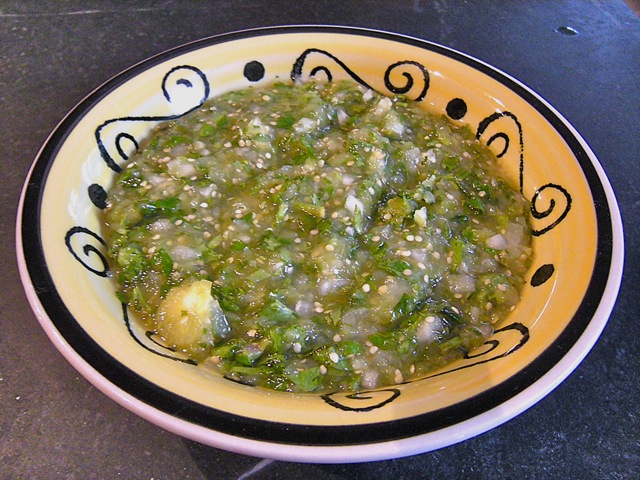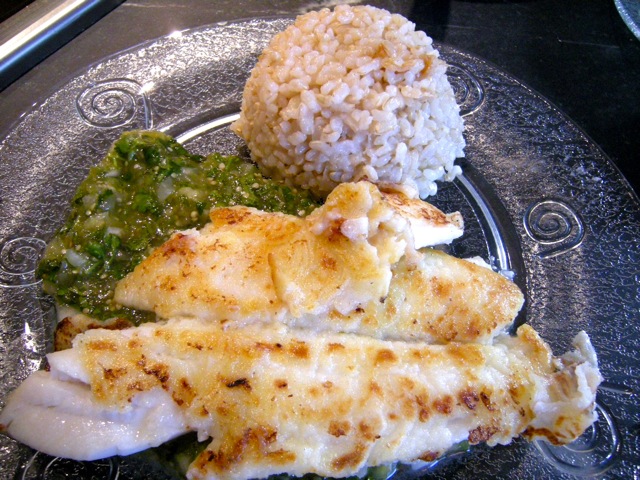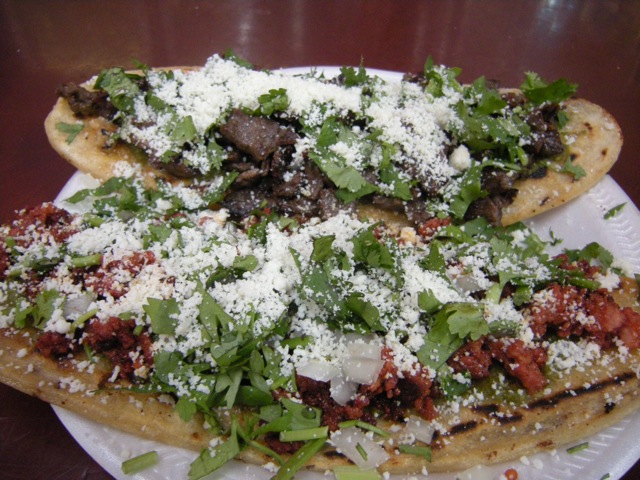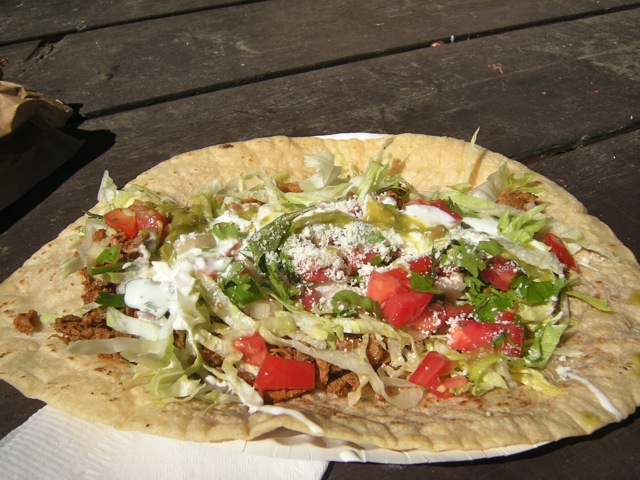As a seasonal occurrence let’s taste another distinguished native American food: the tomatillo, miltomate or husk-tomato. Pierre had bought the 2 lbs of them I had ordered last week —a good thing that they keep well— and today I finally got to make a salsa verde. This green-husked fruit is a close relative to the tomato. Also member of the Solanacea family, it’s Latin name is Physalis philadelphica. The Latin name for what we know as tomato today is: Solanum lycopersicum. Both fruits’ names (yes! they are fruits) derive from the Nahuatl word: tomatl. Sophie Coe in her book America’s First Cuisine gives an important precision:
“Nahuatl is an agglutinating language, which means that the root of the words were modified by adding prefixes and suffixes. To find out exactly which plump fruit was being eaten one must distinguished between a miltomatl, a xitomatl, a coyotomatl and many other kinds of tomatl. Some Europeans, who did not understand the structure of the language they were dealing with, thought they were simplifying things by shortening the name of the larger fruit which we know as the tomato from xitomatl, meaning plump things with a navel to plain tomato”
I have read that Tomatillo husks are used to help retain the bright green color of the cactus when boiled with the latter. But this is not something I have yet tried; if you have, please share your experience.
The Salsa Verde recipe I made today is very simple and can be used in many ways. The picture shown above is a pan fried fillet of sole with Salsa Verde & brown rice. I made enough salsa to serve tomorrow with chips and cocktails. I also froze a container for later in the season.
Recipe:
2lbs of Tomatillos
Remove the husk.
Wash thoroughly with hot water to remove the slightly slimy coat.
Meanwhile boil water & blanch the tomatillos for 30 seconds.
While they cool:
chop 1 onion very small.
1 jalapeño pepper
1 bunch of fresh cilantro (fresh coriander)
Salt to taste
Optional: lime juice, olive oil.
Blend your tomatillos in food processor or chop by hand.
Add your chopped veggies.
Keep in the fridge until serving time, or save at room temperature if you are going to serve it with fish or poultry.
How to cook your fillets:
Heat your pan coated with a dollop of butter and a table spoon of olive oil.
Dip your fillet in milk, drain excess and dredge in lightly salted flour, drain excess.
Cook your fillet about 3/4 minutes each side over medium heat.
Remove and serve over a bed of green salsa and steaming brown rice.
Yum! Healthy, fast and tasty!







